History of Cable TV
A Timeline

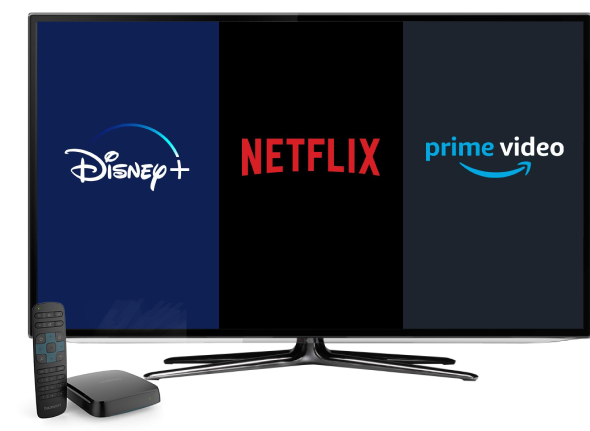
Some say cable TV is dead. With the rise of streaming giants, cable TV might indeed seem like a thing of the past.
However, the likes of Netflix, Disney+, and Amazon Prime wouldn’t exist without their predecessors. Cable has existed for 80 years, paved the way for the internet and on-demand access, and changed how we consume media.
The technology to transmit video signals across long distances has opened many doors. However, cable TV has not always been as seamless as today.
Let’s explore the history of cable TV entertainment to understand its part in the modern age—from laying down the first infrastructure to answering the question: when did Netflix start streaming?
timeline
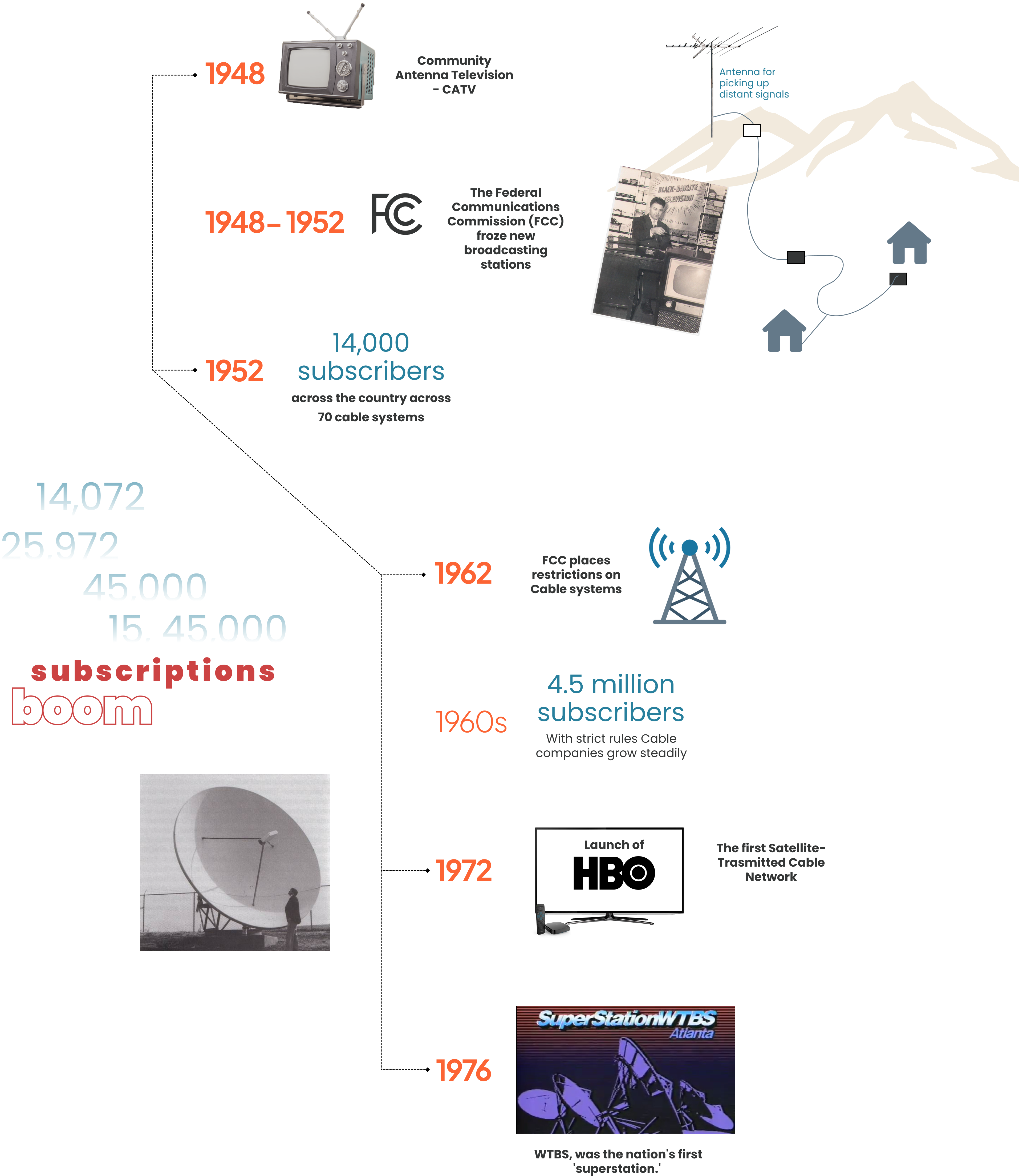
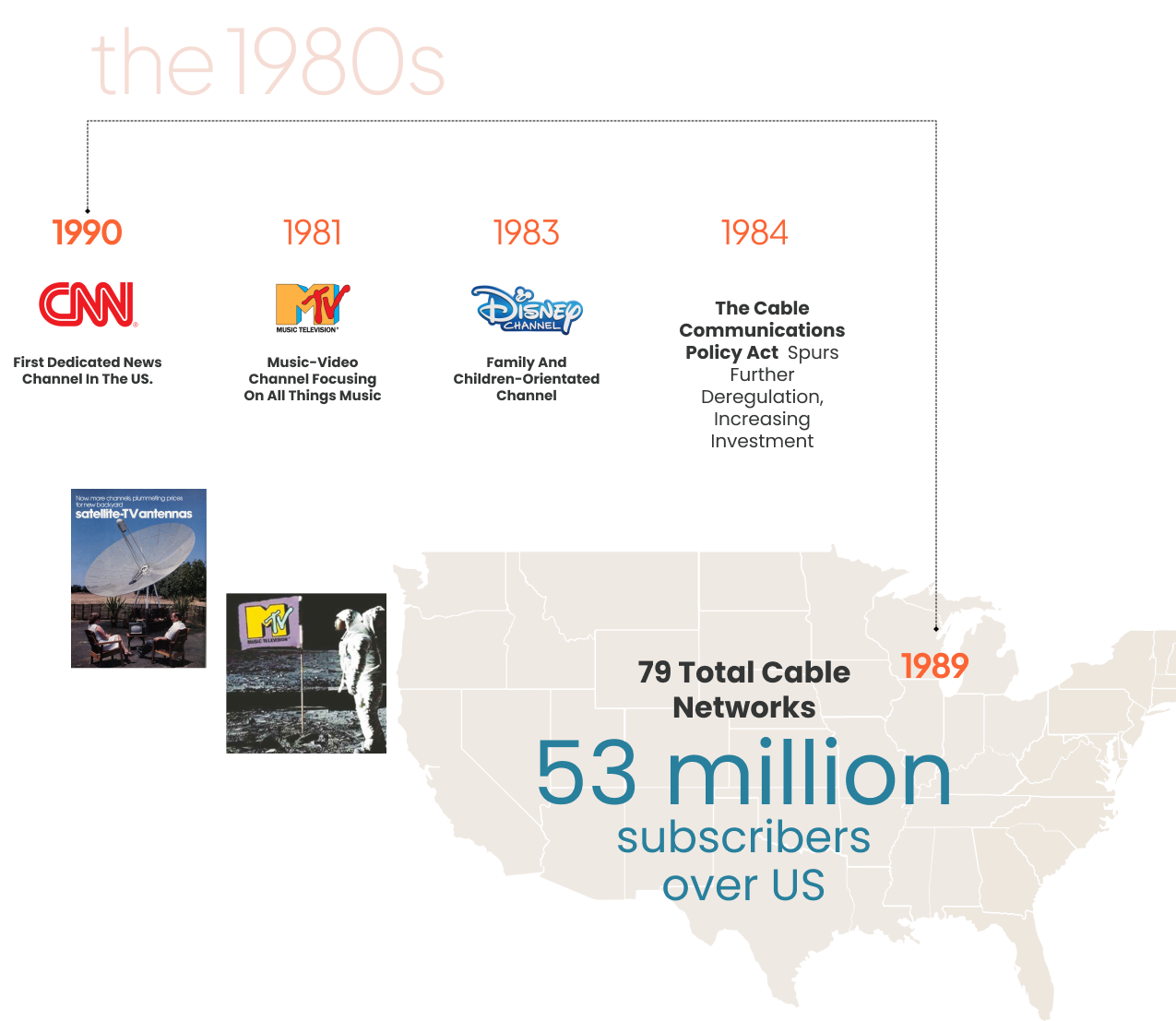
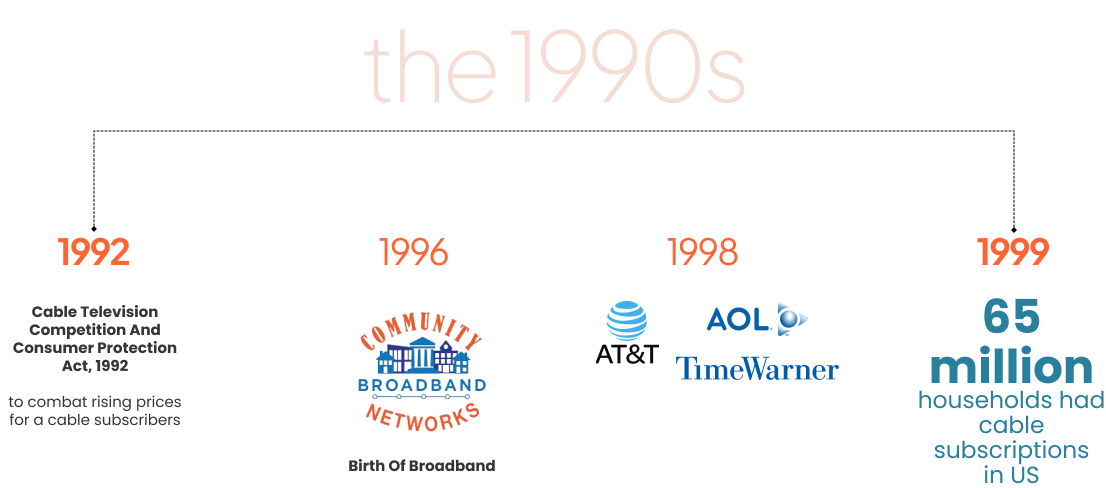
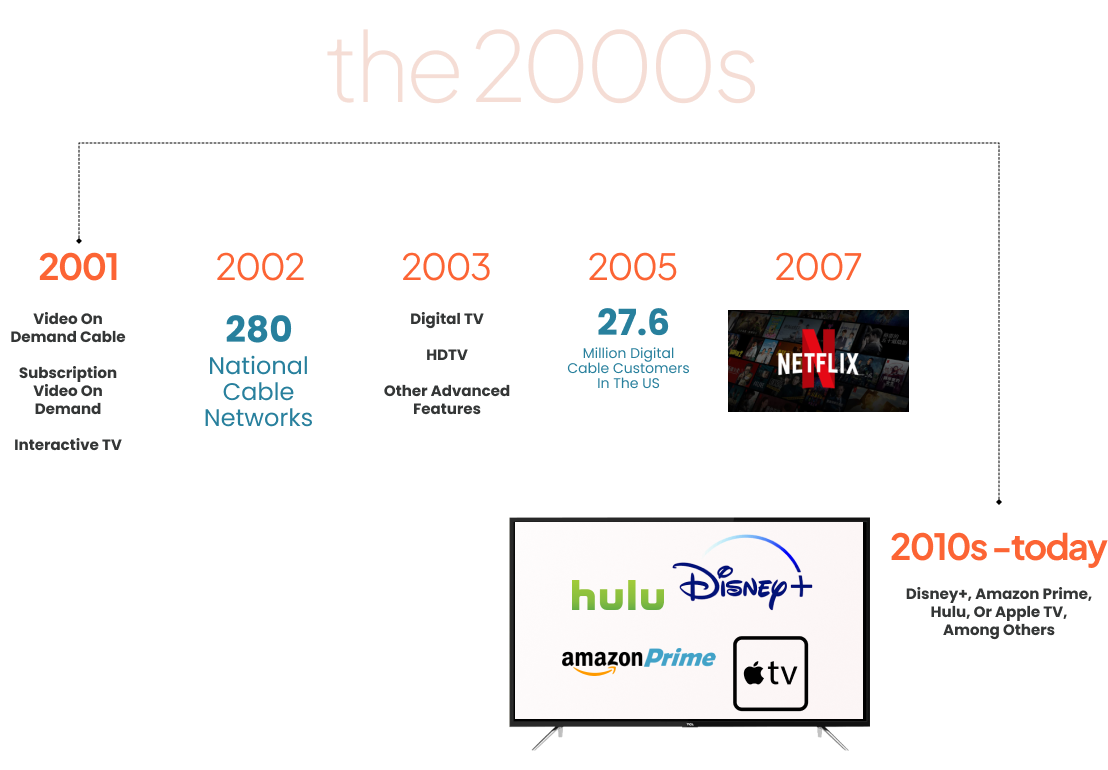
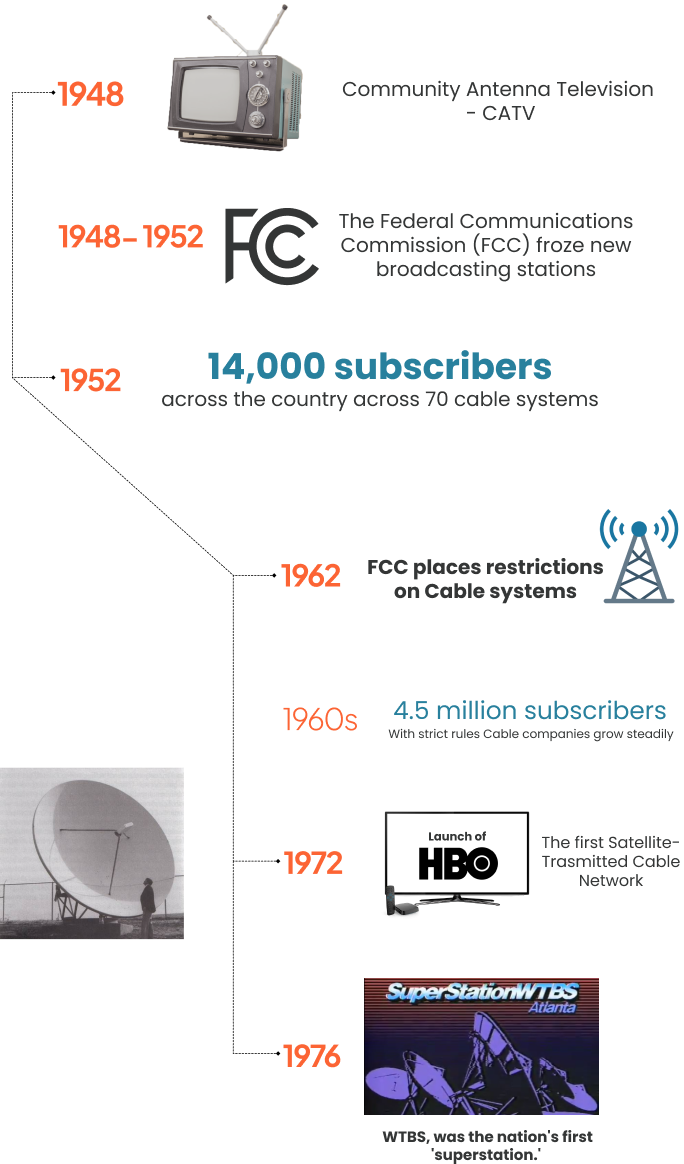
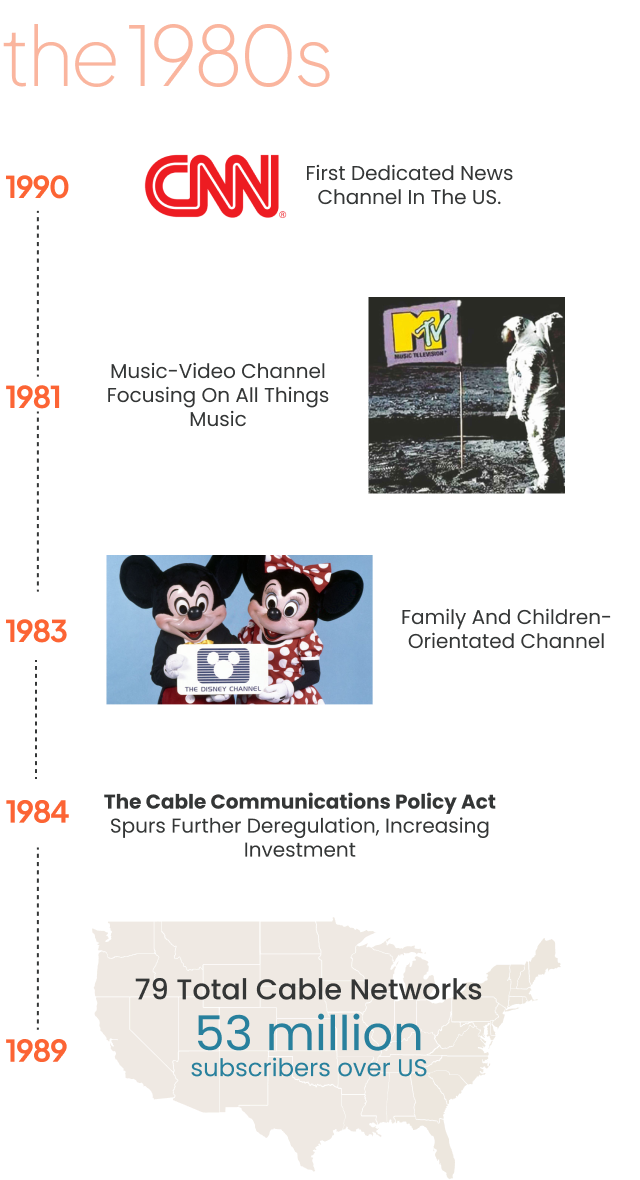
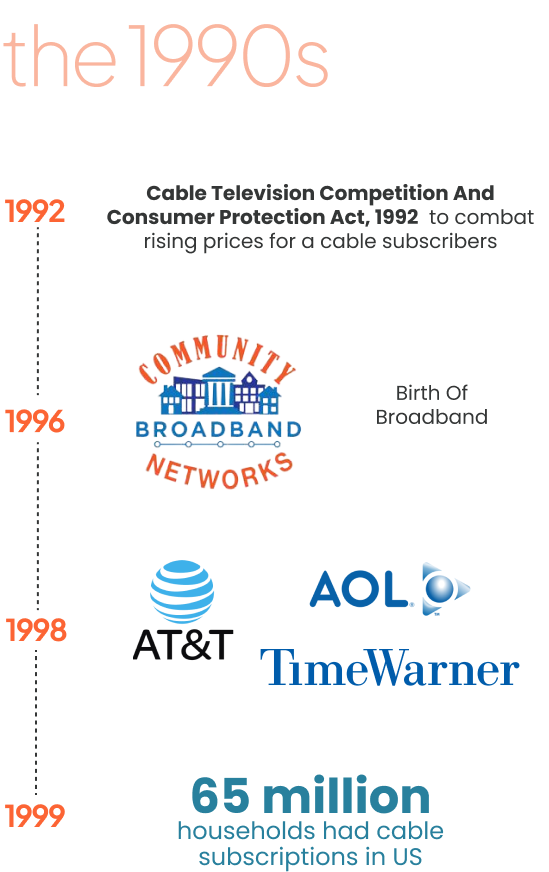
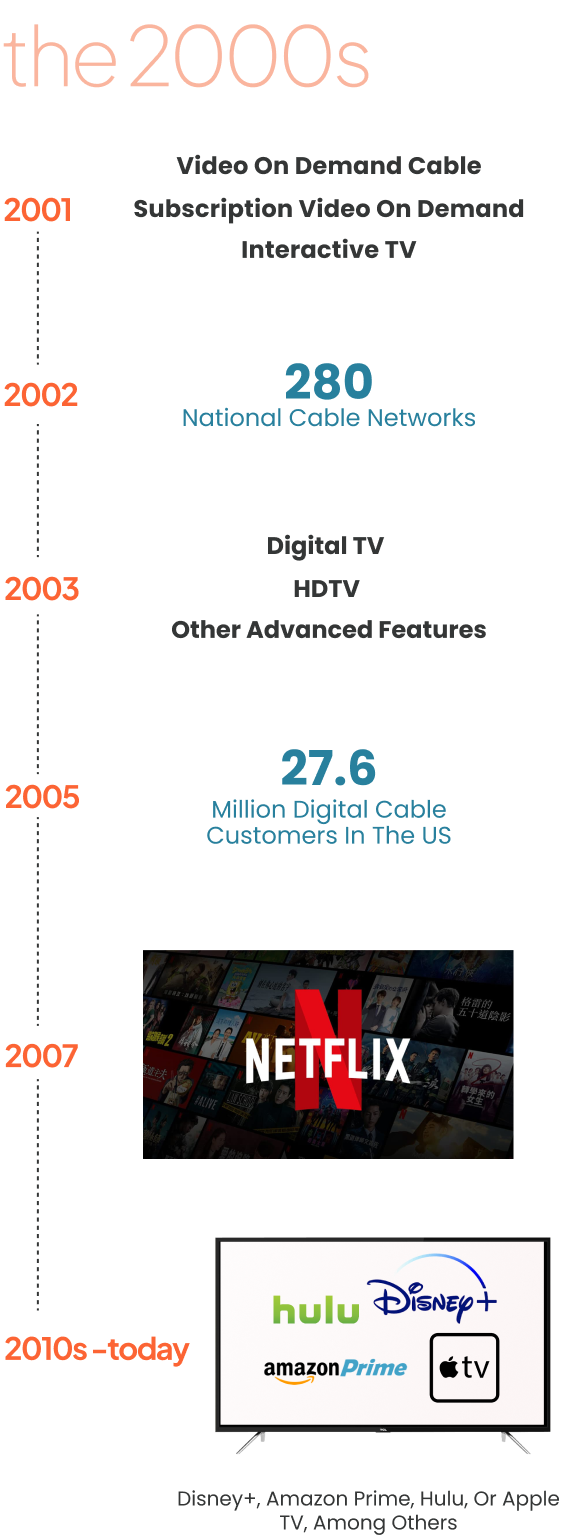
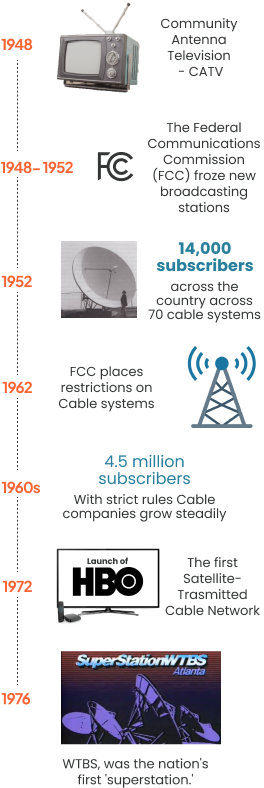
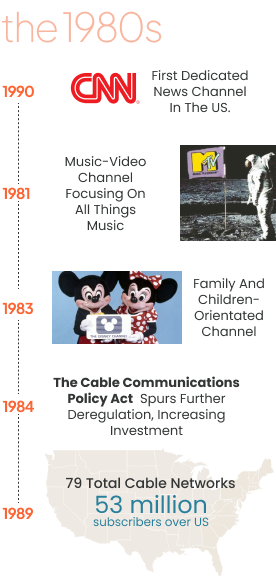
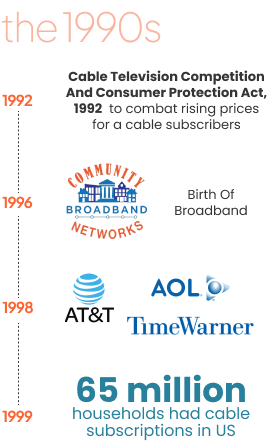
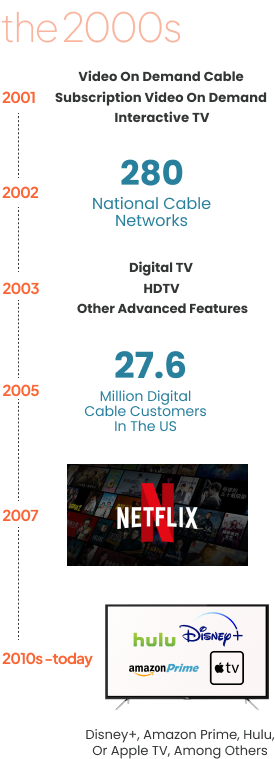
The 1940s and 1950s

The history of cable tv timelines begins in the 1940s and 50s. In the early days, cable TV was patchy and primitive compared to today’s standards. However, the technology was groundbreaking.
1948: the origins of cable tv
Since 1926—with the birth of television—channels broadcast shows through signals over the air.
However, signals were poor and easily disrupted. People were without television in mountainous and geographically remote areas across the states.
When did cable TV start? What is CATV?
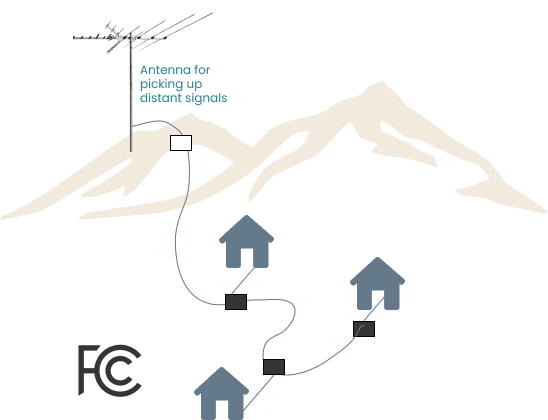
In 1948, cable television erupted across the US. Cable TV began its journey in homes across Arkansas, Oregon, and Pennsylvania.
They built ‘community antennas’ on mountain tops and elevated ground to receive broadcast signals (Community Antenna Television – CATV). Cable companies connected each home to the local antennas to receive the signals through hard wires.
Soon, homes across America (and the world) could relax on their sofas and enjoy television. Cable TV launched a new era of technology and entertainment.
1948-1952: FCC freeze
As more and more homes invested in TV sets, channels sought to monopolize the market. New broadcasters popped up all over the US—from Georgia to Illinois.
With the boom in cable channels, the airspace became overcrowded. People struggled to get a clear signal in many areas as there was too much interference.
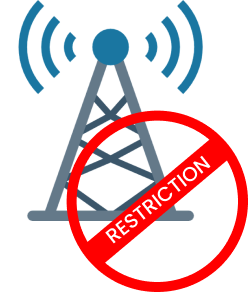
In response, the Federal Communications Commission (FCC) froze new broadcasting stations.
From 1948 to 1952, cable operators were not allowed licenses to create new channels. Rather than limit viewers’ choices, the freeze gave operators a chance to organize and improve existing channels.

1952: subscriptions boom
By 1952, the FCC licensing restrictions eased up, and cable television found its footing in American households. As such a new technology, it required serious investment to grow.
There were more than 14,000 subscribers across the country across 70 cable systems—speaking to the popularity of cable TV and explaining how it got the necessary funding to expand as quickly as it did.
the late 1950s: from local to long distance
Throughout the 1950s, cable television continued its upward trend of popularity. As the decade progressed, cable operators took advantage of the rapidly developing technology.
The focus shifted from transmitting local broadcast signals to picking up signals hundreds of miles away. Expanding audiences could enjoy a new range of programming choices from across the states.
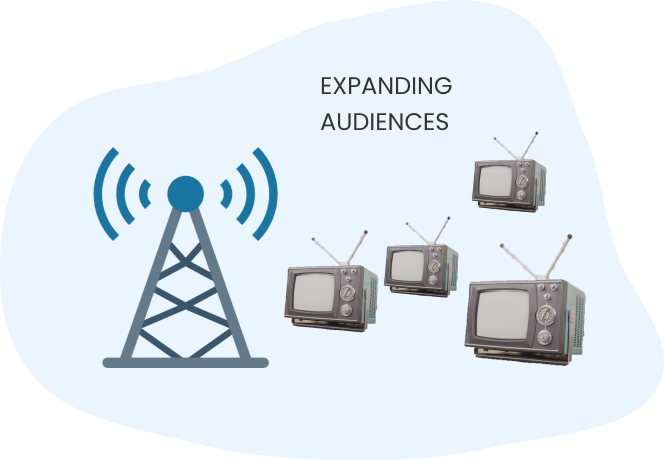
In 1959, many people saw television as a turning point. Everything, from politically-charged TV shows to ideas of political leaders talking directly to the entire nation, fueled utopian promises of television.
As more and more Americans chose to enjoy TV shows and movies in their own homes, the film industry felt threatened. And so, movies, TV, and cable television evolved.
The 1960s
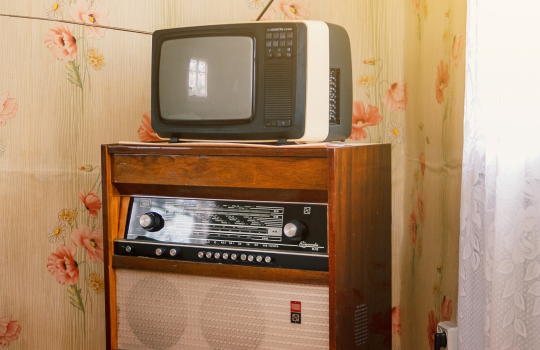
The age of interconnectivity had begun. By 1960, television was definitively the main form of media in America.
Throughout the 1960s, television viewing times rocketed. Despite the unfulfilled promises of an ethically better medium, more and more Americans tuned in to an increasing variety of shows.
1962: further FCC interference
In 1962—only 14 years after the birth of cable TV—there were around 850,000 subscribers in the United States. In less than two decades, cable operators saw an increase of more than 6,000% in subscriptions.
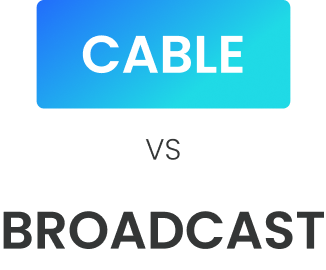
Beyond the undeniable love of TV, the main reason for this growth was extensive investments. Seeing that cable was a solid rival to traditional broadcast television, significant corporations like Westinghouse, TelePrompTer, and Cox, poured money into the former.
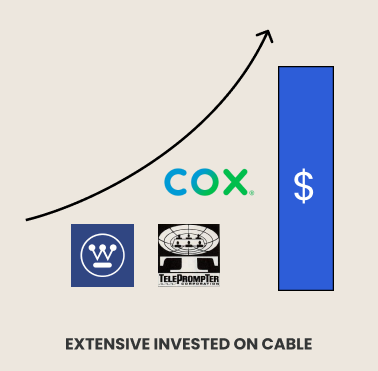
Seeing the very real threat of cable for what it was, the broadcast industry pressured the FCC to act.
After their license freezes a decade ago, the FCC took a step back. In 1956, they declared they didn’t have jurisdiction over cable. Yet, in 1962, they put in place regulations to prevent cable companies from importing long-distance signals.
What was once a highly popular, diverse, and interconnected system returned to its origins.
Once more, viewers were stuck with local channels. Only in small towns, where they could not receive regular broadcast reception, cable continued to thrive.
the late 1960s: slow growth
With strict rules about what they could and couldn’t air, cable channels offered a limited choice. Investors were unwilling to pool money into an industry that’s growth potential was so stagnant. Cable companies faced legal battles throughout the decade as the still-new technology began to define itself in a physical and legal capacity.
Despite FCC regulations, cable subscriptions continued to grow steadily. By 1970, there were more than 4.5 million cable subscribers.
The 1970s

As the FCC rescinded its freeze, cable TV moved to film production, sports, and classic movies. More networks sprung up as cable technology solidified its place in the history books.
1972: gradual deregulation and when did HBO start?
The FCC freeze on cable TV ended in 1972. As cable companies resisted restrictions, the early 1970s saw a gradual modification of rules surrounding the importation of long-distance broadcast signals. With fewer regulations, cable TV once again welcomed growth and renewed investment opportunities.
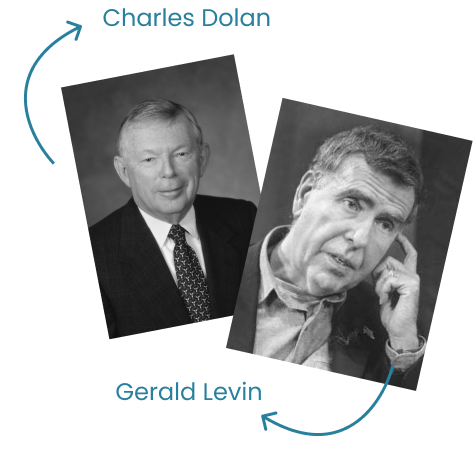
In 1972, Charles Dolan and Gerald Levin (Sterling Manhattan Cable) launched the first pay-TV network. Home Box Office—more commonly known as HBO—focused on movies.
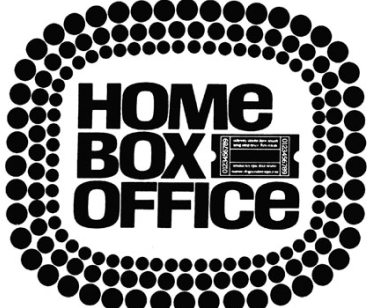
Investors paid particular attention to satellite technology, which promised the opportunity to expand coverage and reach more customers.
We can partly thank the drive to create a national satellite distribution system to Dolan and Levin’s highly successful HBO and the newly approved domestic satellite transmission. Moreover, HBO proved people were willing to pay for such content.
Other channels replicated HBO’s model. Without the limitations of traditional cable, satellite technology opened up an even more tremendous market potential.
Satellites changed the television landscape exponentially, paving the way for many new networks to spring up.
1976: diversifying content
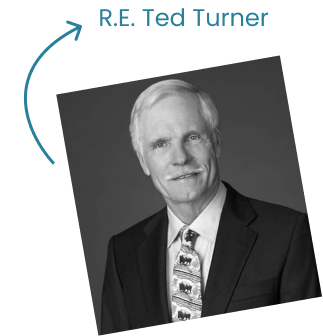
The next entrepreneur to use the groundbreaking satellite technology was R.E. Ted Turner, the owner of a local television station in Atlanta, Georgia. Turner’s channel, called WTBS, was the nation’s first ‘superstation.’

WTBS was under the Turner Broadcasting System, one of the largest cable TV conglomerates throughout the 1970s and 80s. WTBS would later join other national networks.
In the 1990s, Turner Broadcasting System joined with WarnerMedia and is now owned by Warner Bros. Discovery.
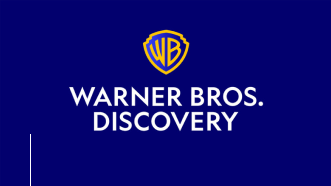
As a historical moment in cable TV, WTBS launched a subscription service broadcasting exclusive sporting events and classic movies.
The cable industry and satellite technology never looked back.
the late 1970s: resuming growth and expansion
As the decade drew to a close, nearly 16 million households were cable subscribers. Three decades after its conception, cable TV had grown to impossible levels within the US. Moreover, channels debuted left, right, and center.
Showtime (1976)
Rising out of California, Showtime was HBO’s first competitor. The first show it aired was Celebration, a concert featuring Rod Stewart, Pink Floyd, and ABBA. Within a year, Showtime had 55,000 subscribers nationwide.

USA Network (1977)
Originally launched as ‘Madison Square Garden Sports Network,’ the USA Network was one of the first sports cable channels. In 1978, it expanded to include children’s programming.
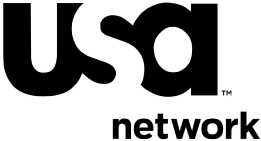
Nickelodeon (1977)
The first cable channel for children, Nickelodeon was commercial-free until 1984.

ESPN (1979)
With credible and established sponsors, such as Anheuser-Busch Getty Oil, ESPN was a dedicated sports channel, airing its first broadcast in 1979 to 1.4 million cable subscribers.

The 1980s
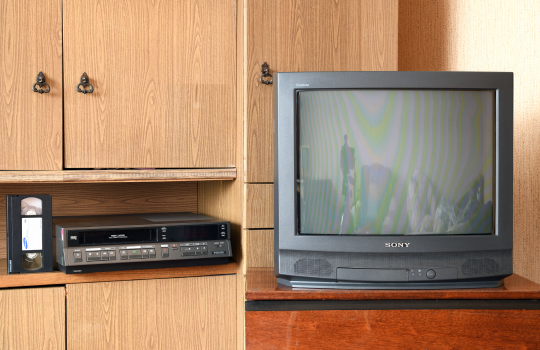
The 80s was a decade of innovation within the cable television industry. Well-known and beloved channels began their lives throughout the 1980s, such as CNN and The Disney Channel.
Further restrictions were lifted and funds released for much-needed infrastructure. With its dominance well and truly established, cable TV in the 80s exploded.
1980: CNN
In 1980, there were 28 cable program networks (a figure that was to more than double by the end of the decade). At the beginning of the 1980s, CNN debuted. Initially known as Cable News Network, CNN was launched by Ted Turner—the same Atlanta local to start WTBS four years earlier.
CNN was the first to provide 24-hour news coverage and the first dedicated news channel in the US.

1981: when did MTV start?
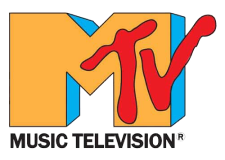
MTV started life as a music-video channel focusing on all things music.
With the rise of music videos in the 1960s, led by The Beatles A Hard Day’s Night, cable networks saw the value of music television.

Music Video TV was launched in 1974 as a channel to show music videos in record stores across the US.
In 1984, the network launched its own cable channel to celebrate music with the words “Ladies and gentlemen, rock and roll.” MTV was initially only available in New Jersey. The first music videos to grace the channel were the Buggles’ Video Killed the Radio Star. Pat Benatar’s You Better Run followed it.
Later in the decade, MTV shifted towards reality TV—a continuing trend today.
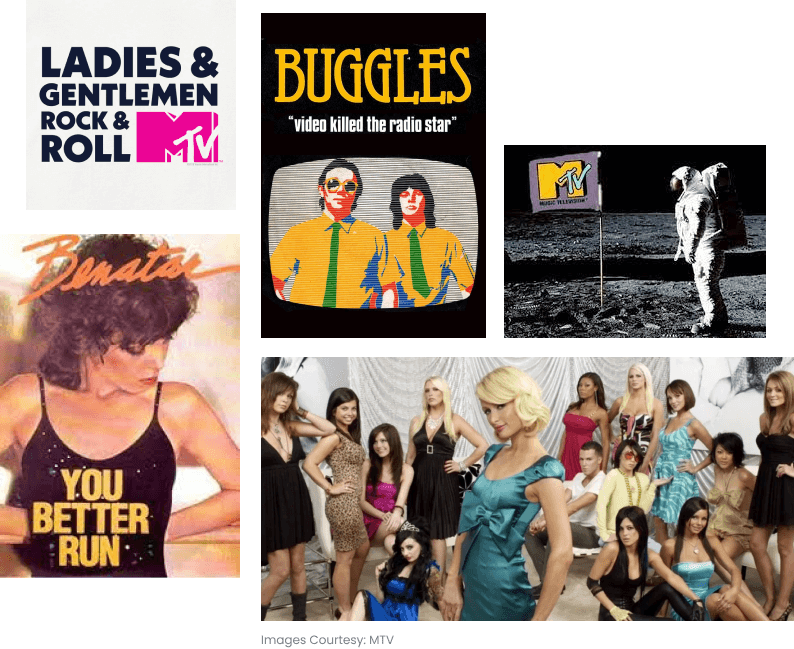
1984: investment in infrastructure
With so many big names in the game, cable TV rapidly expanded. Congress passed the Cable Communications Policy Act in 1984. This further relaxed cable regulations and promised funds to grow cable television infrastructure.
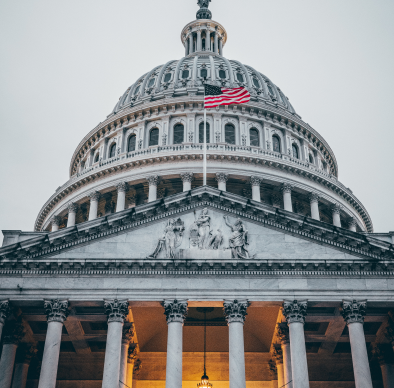
Cable
Communications
Policy Act OF 1984
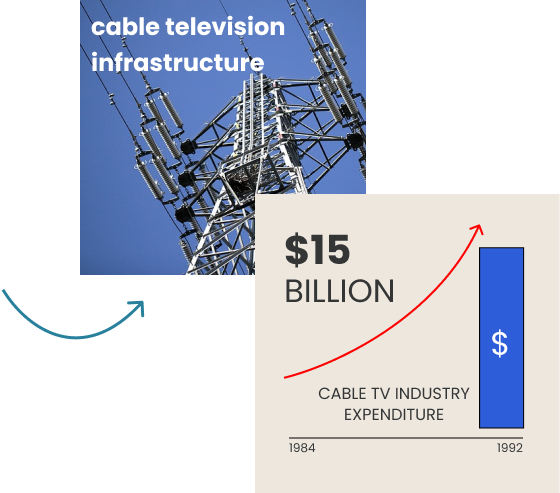
Between 1984 and 1992, the cable TV industry spent over $15 billion on wiring America and program development. As the largest private construction project since World War II, cable TV became a major force in providing high-quality entertainment and news to Americans.
With satellite delivery, much-needed funding, and deregulation, cable TV peaked.
1989: taking over the US
By the end of the decade, cable TV program networks numbered 79. Many TV networks are still available today.
Some of them, such as CNN and MTV, played instrumental roles in the development of cable news network history.

However, the growing industry saw subscription price rises for consumers—a concern for policymakers.
Nearly 53 million households subscribed to cable TV.
The 1990s
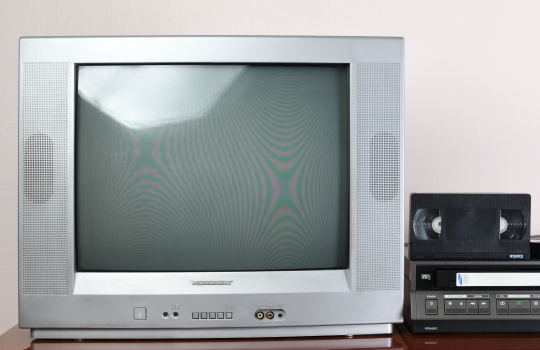
After a decade of relative freedom, innovation, and growth, cable TV once more found itself under tightening regulations.
The 1980s resulted in an explosive demand for cable, and companies began raising prices.
However, the price hikes meant major upgrades to distribution networks and the introduction of broadband. Continuing innovation and technology growth began shaping TV as we know it today.
1992: rising prices
As watching television at home became more and more of a staple in American life, cable companies asked customers to pay higher prices. The companies felt somewhat justified with more channels, shows, and better infrastructure.
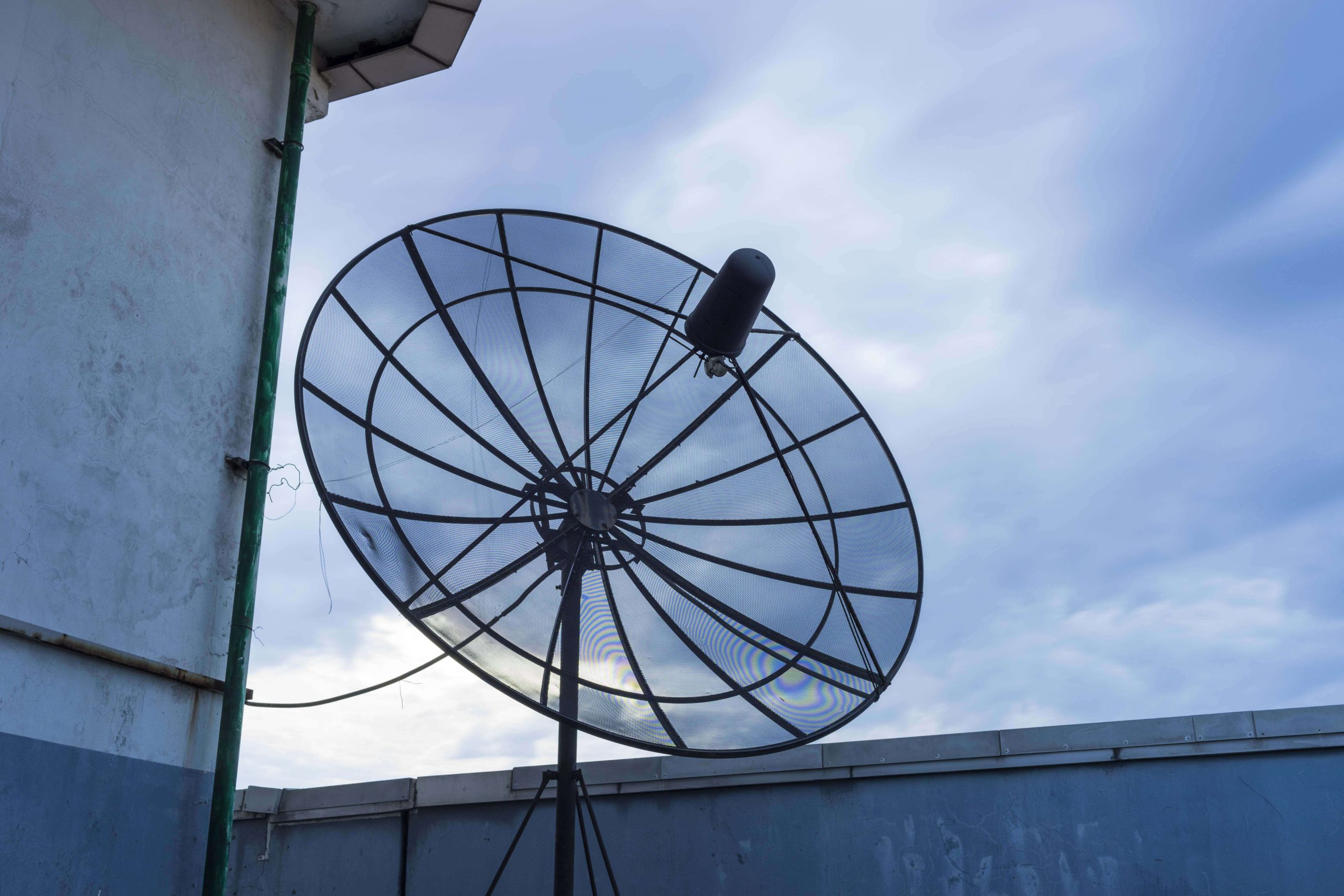

However, policymakers grew concerned. With so many long-distance channels available and higher prices, local media were harder to access.
In response, Congress passed they passed the Cable Television Competition and Consumer Protection Act of 1992.
The act made forced cable companies to:
The dominance of cable companies threatened local companies and other competition. The new act allowed for local companies to have more control over cable broadcasting in their area.
There were too few voices available. With television viewing times up, cable companies (and the power in charge) had a lot of control over the media they consumed.
Despite Congress’s acts and restrictions, new channels and networks popped up continuously.
After the success of ‘niche’ networks, like ESPN, Nickelodeon, and MTV, many further channels dedicated themselves to one entertainment stream.
1996: major upgrades and the birth of broadband
By 1996, 57% of subscribers received at least 54 channels. Only a few years previously, most TV watchers only received 47.
In 1996, cable companies began investing large sums of money in infrastructure. Cable television was about fifty years old at this point. At the same time, the general framework had slowly progressed to improve cable lines over the years.
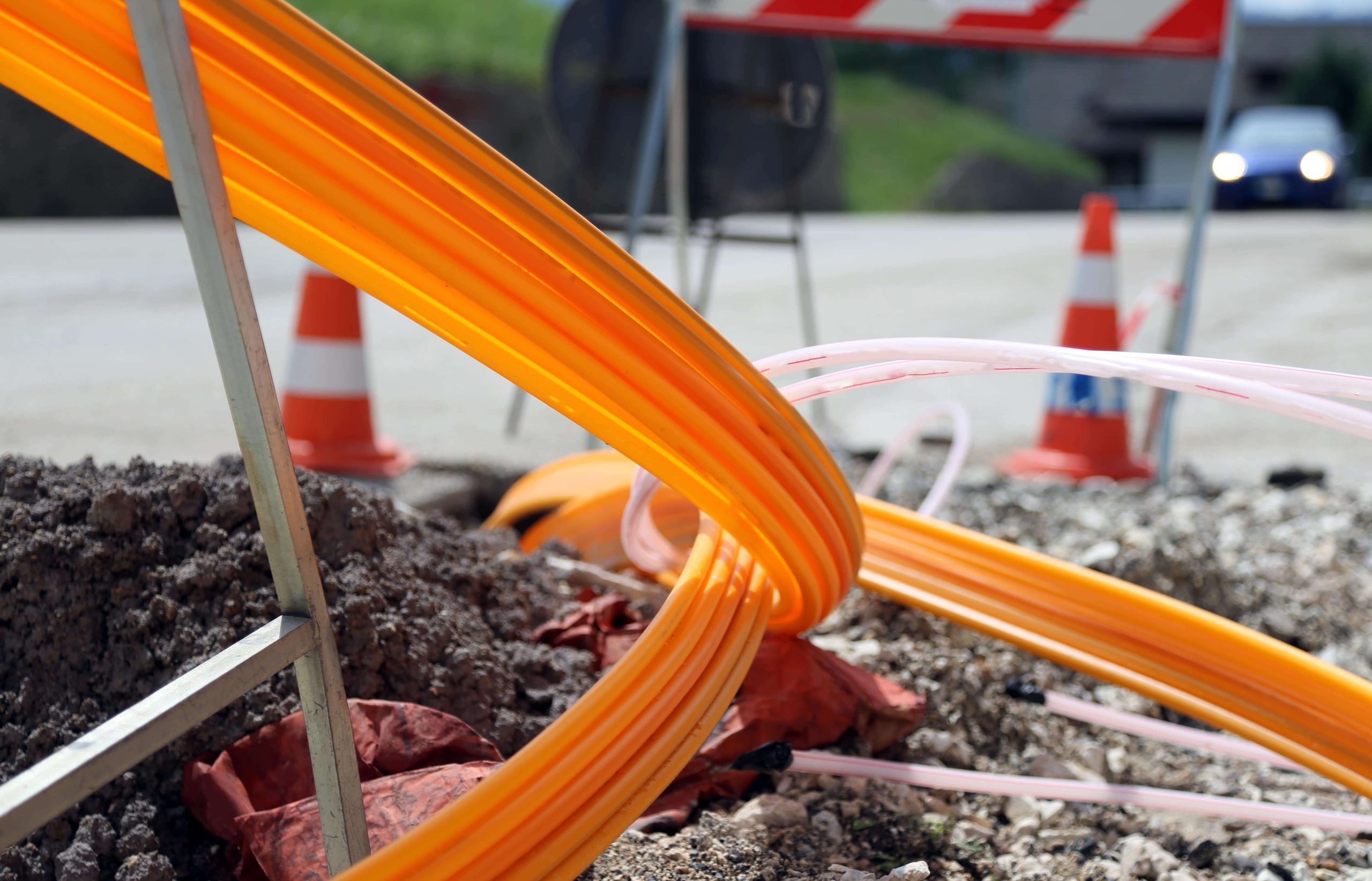
This major upgrade of distribution networks involved laying down fiber optic and coaxial cable—more commonly known as “broadband” networks.
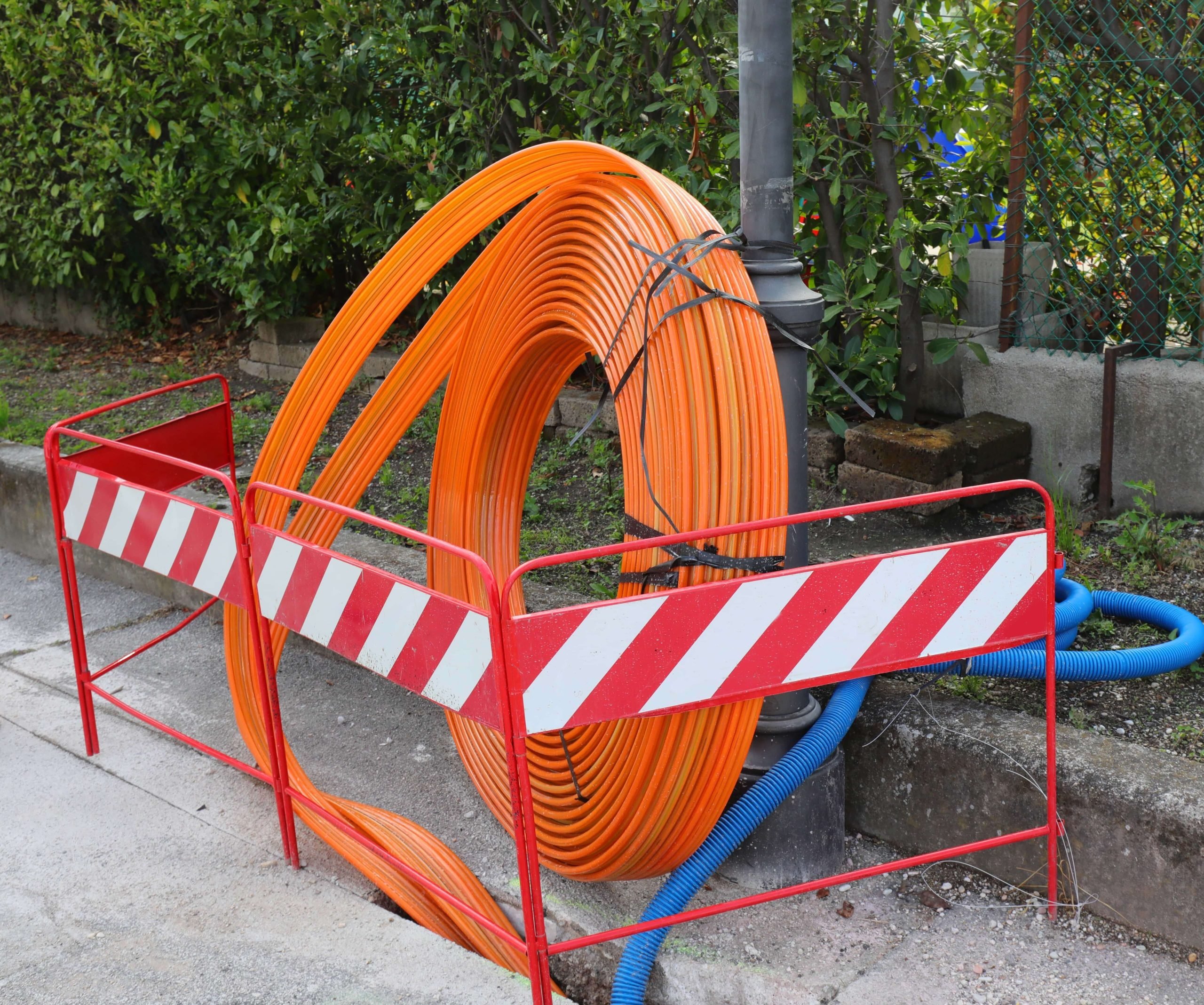
Broadband networks enabled higher capacity hybrid networks, providing multi-channel videos, two-way voice, high-speed internet access, and high defintion, advanced digital services.
With just one single wire, broadband provided American homes with more independence, choice, and high-quality entertainment. Moreover, the introduction of broadband led to the development of the modem.
Also, in 1996, Congress became suspicious more of ‘Big Cable.’ They passed the Telecommunications Act. This new law and deregulation meant that anyone could enter any communications business.
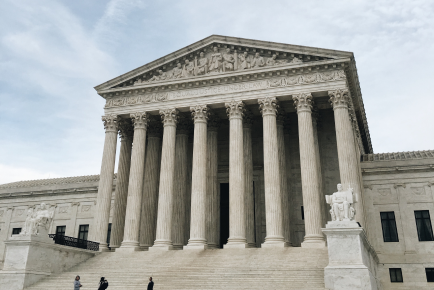
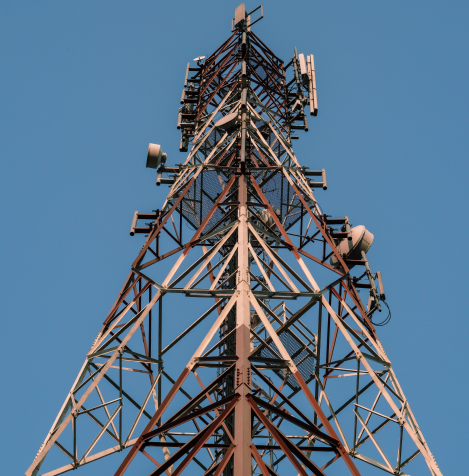
In other words, Congress tried to decrease the monopoly cable companies had. Any communications business could compete in any market against any other communications.
The new act, and the innovations of broadband, spurred competition and resulted in more choices for consumers.
1998: AT&T, Microsoft, and AOL Time Warner
By spring, the number of national cable video networks had increased to 171. As a result of the new law, more big names entered the cable business.
Many cable organizations joined and exited the industry throughout the latter half of the decade.
With so much competition, viewers in urban, suburban, and rural areas had more choices of entertainment, information, and communication services. That said, many newer companies struggled to make their mark.
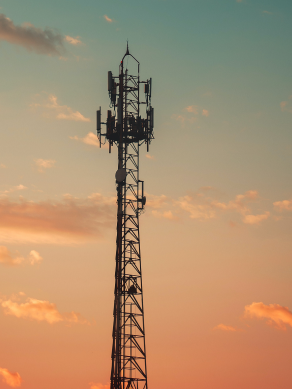
Moreover, their audiences shrunk as cable channels diversified and became more specific.

What had once been a communal and national experience became an individual and divided one. People could watch whatever they want, not necessarily the same shows as everyone else.
There were channels for news, sports, movies, shopping, music, cooking, cartoons, old television, old movies, home improvement, gardening, comedy, documentaries, animals, and other interests.
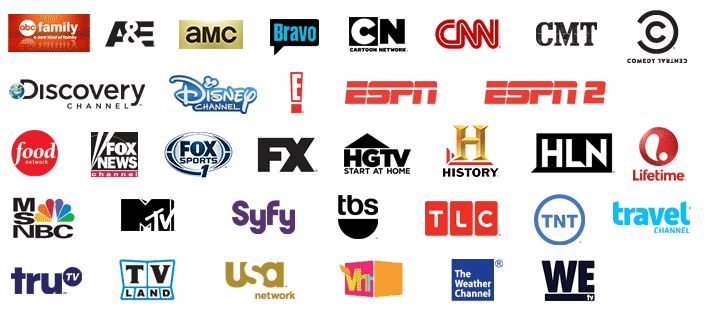
AT&T entered the cable industry briefly but left again in late 2001. Paul Allen (founder of Microsoft) began acquiring his cable properties.
America On-Line merged with Time Warner in a historic deal. Acquiring Time Warner’s cable properties, the companies formed AOL Time Warner.
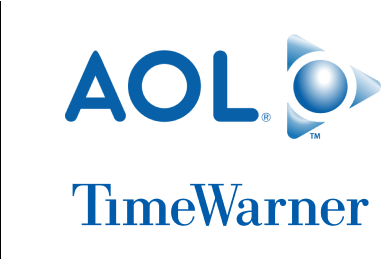
1999: a staple of american life
By the end of the century, approximately 70% of American households had watched television. More than 65 million households had cable subscriptions.
the 2000s
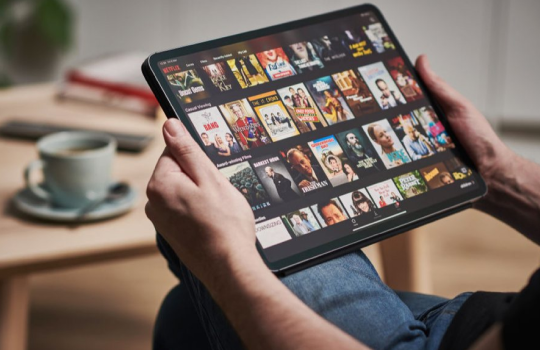
At the dawn of a new millennium, people felt a sense of hope, achievement, and excitement. The previous century had yielded explosive innovations and technological inventions.
As the 2000s began, people wanted more. And, by and large, they got what they wanted
With a wealth of channels, each trying to outdo the other, consumers were blessed with more and more fresh content.
Moreover, much of the technology we enjoy today—DVDs, on-demand programming, and streaming—began in the first decade of the 2000s.
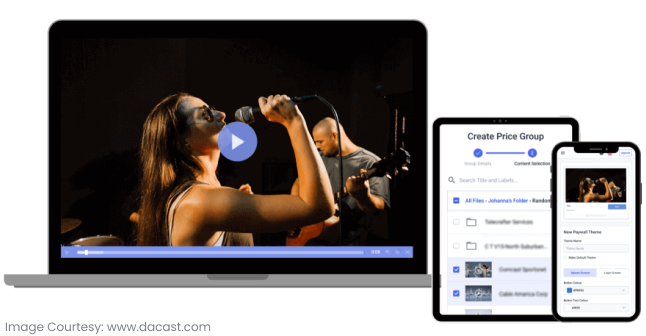
While we might not remember technical breakthroughs, the ideas and infrastructure were in their infancy. And the seeds for the future of streaming services were growing.
What you may remember, however, is the rise of reality TV, news as entertainment, wall-to-wall news coverage, and game shows.

As Who Wants to Be A Millionaire hit our screens, channels chose TV personalities to anchor news shows, and the September 11 attacks hit our screens, how we watched TV—and what we watched—changed forever.

2001: dynamic watching
While we might not remember technical breakthroughs, the ideas and infrastructure were in their infancy. And the seeds for the future of streaming services were growing.
Despite audiences dividing between different channels, some shows united the nation and became sensations, such as The Sopranos and The Wire (both HBO shows).
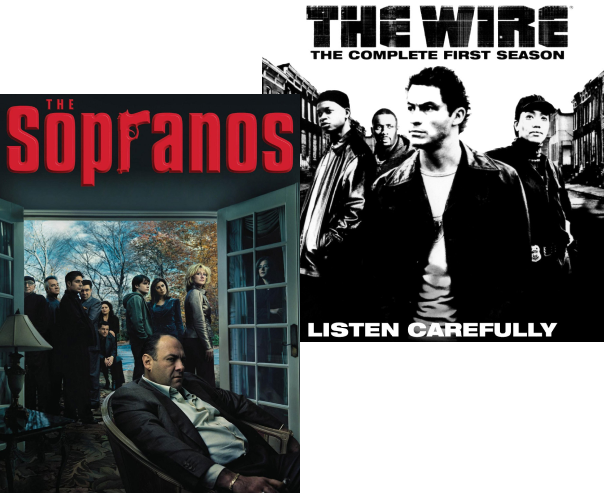
Now that the technology was in place and viewers had so much choice, cable companies sought new ways to change how people watched television. They began pilot testing video services:
VIDEO ON DEMAND CABLE
Unlike broadcast TV, on-demand systems initially required households to have an internet connection with considerable bandwidth to access the content.
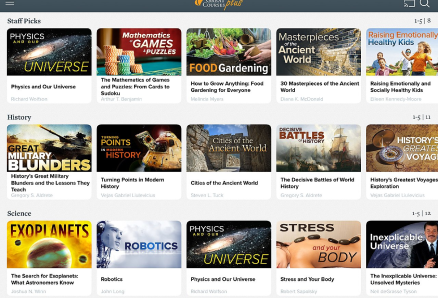
SUBSCRIPTION VIDEO ON DEMAND
SVOD requires extensive infrastructure and costs more for consumers.
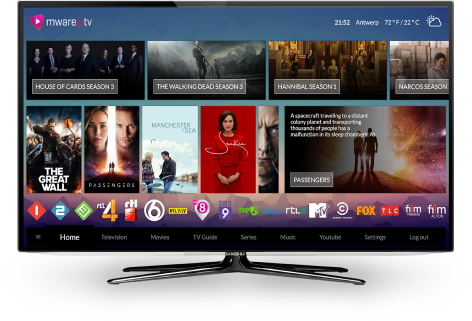
INTERACTIVE TV
In an attempt to utilize TV’s vertical elements, cable companies attempted to create on-demand content delivery with online shopping, banking, and other factors.
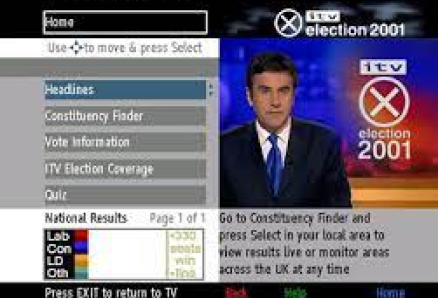
However, the industry proceeded cautiously. The cost of upgrading equipment—particularly installing fiber optic cables in customers’ homes—was expensive. In addition, the services and new technology weren’t ready to launch fully. With many technical creases to ease out and new business models to adopt, the move to the on-demand video was slow.
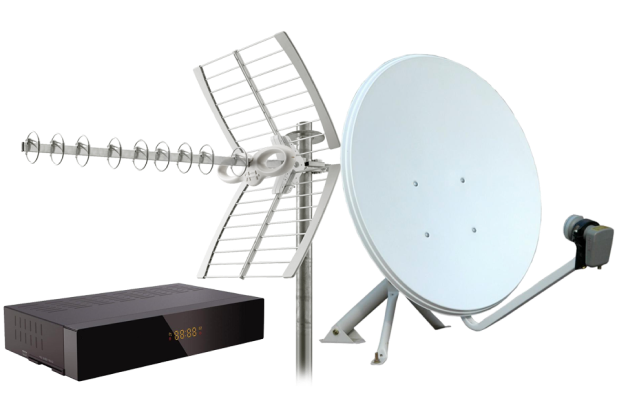
At the end of the 1990s, many households had low-cost digital set-up boxes. Fortunately, the technology accommodated many of the new video services available.
However, cable companies still needed more expensive technology to realize all their grand plans, for instance, high definition television—a direction off-air broadcast stations and HBO, Showtime, Discovery, and ESPN had taken.
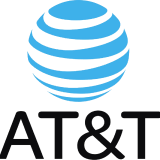
In 2001, AT&T agreed to merge its cable systems with Comcast Corp, creating the most expansive cable operator with over 22 million subscribers.

2002: cutting-edge communication
By 2002, roughly every two in three US households had access to cable television, cell phones, and personal computers—as found in a study sponsored by the Cable & Telecommunications Association for Marketing (CTAM).
When people had relied on landlines and public libraries only a decade before, the 2000s saw a rise in personal technology.
Moreover, you could find digital cable in 18% of US television homes.
There were more than 10 million subscribers to high-speed internet access via cable modems by late 2002.
Over 2 million customers used cable for their phone connections by mid-2002.
By this time, there were about 280 national cable networks—an increase of more than 100 in four years—with new channels added daily. To accommodate demand, cable companies rapidly expanded their content offerings.
By the end of the year, consumer electronics and cable companies agreed on a “plug and play” system. This meant digital TVs could connect directly to cable systems without a setup box.
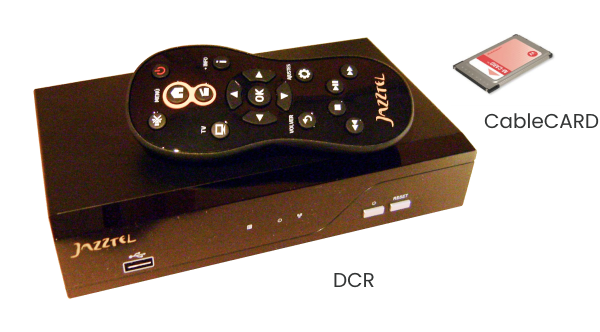
They were named Digital Cable Ready television sets (DCRs). Consumers had to plug in a security device called a CableCARD and view encrypted digital programming after being authorized by the cable operator.
2003: the digital tv transition
In 2003, the digital TV transition leaped forward.
Cable companies made substantial gains in deploying high-definition TV (HDTV), video cable on-demand services, digital cable, and other advanced features that we now consider industry standard.

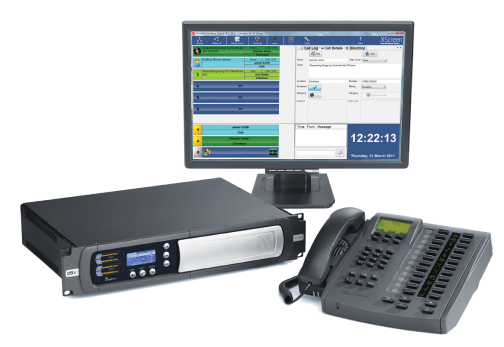
In an adjacent field, competitive digital phone services took advantage of cables Voice over Internet Protocol (VoIP).
VoIP is a technology that allows you to make calls using an Internet connection rather than a regular phone line. By 2006, cable companies accounted for about five telephone million customers.
Plus, as the “plug and play” system took off, there were 700 CableCARDs in September of 2004. By the end of 2005, there were 5,000 CableCARDs in households across America.
2005: growth
When cable TV had initially taken off in 1948, it revolutionalized American TV watching—and the dynamics of our lifestyles. Indeed, when digital cable and high-speed internet began in the early noughties, cable customers saw another drastic change in the entertainment and communications landscape.
By 2005, there were more than 27.6 million digital cable customers in the US, of which 24.3 million subscribers had high-speed internet. The cable industry’s capital expenditures reached $100 billion.
2007: the launch of netflix
In its early days, Netflix was a mail-order DVD rental company. The movie giant launched its online streaming platform in 2007. The initial platform offered on-demand content for a subscription, much like how we see it today.
However, this innovation had a massive impact on the cable industry. Since the rise of streaming giants, with many others copying Netflix’s model, people have questioned out long cable companies will last. But, as we will see, cable has not left us yet.
When did Netflix streaming start?
Netflix was the first of the streaming giants, but it wasn’t the last, by any stretch. Today, consumers have more than 200 streaming options. Netflix remains one of the most popular services. However, viewers can also subscribe to Disney+, Amazon Prime, Hulu, or Apple TV, among others.
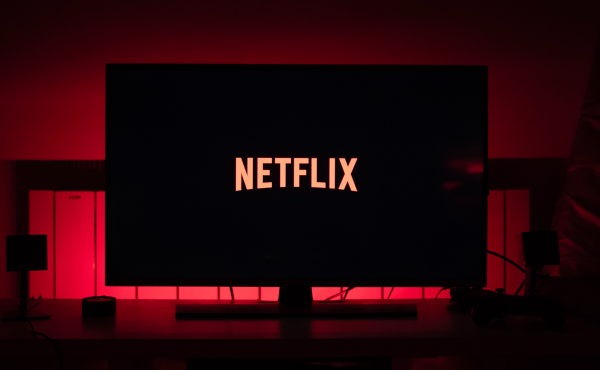
The 2010s - Today

As cable costs rose—partly due to decreasing demand and efforts to revitalize the industry—Netflix was an exciting alternative in the early 2010s. Plus, people were eager for the variety of fresh content and much-loved oldies available on streaming platforms. As their popularity grew, Netflix, Prime, and Hulu began creating their content.
Streaming threatened cable companies.
the decline of cable and cord cutters cable tv
In the last five years, the trend of “cord-cutting” has grown. Many loyal cable subscribers have decided to leave cable altogether and rely solely on streaming platforms. Most cord-cutters were Millennials and Gen Z, ages 18 – 34.
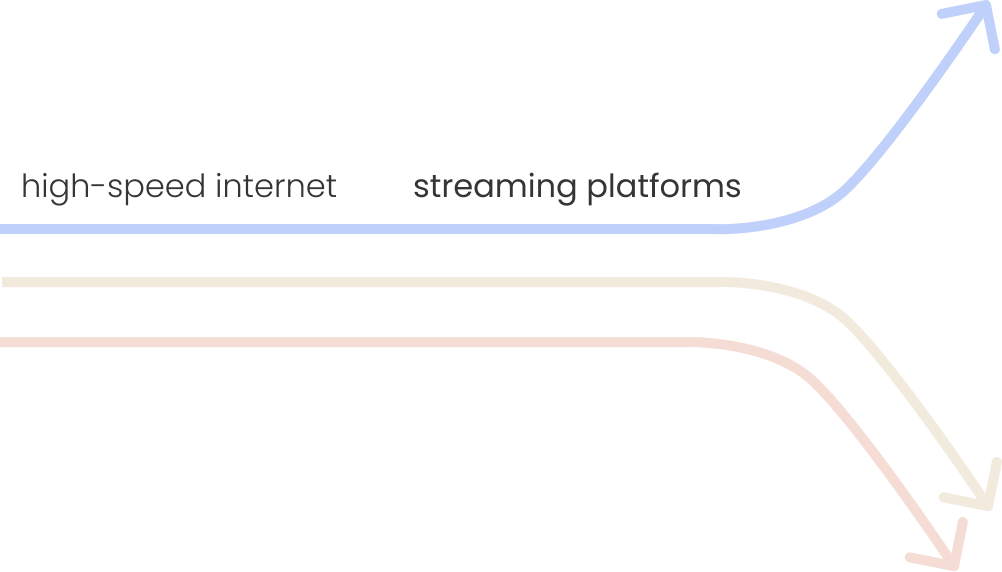
In the US, the number of people watching cable or satellite TV dropped 20% in the same timeframe.
Cable companies may struggle at the moment, but they are still highly relevant. While they might need to adapt to the 21st century, they’re not going anywhere.
Fans of regional sports—and even some national sports—still have uses for cable. Many regional sports channels exist solely on cable broadcasters. As when cable first entered the world, it aided local and regional watching. Seventy years on, people who want to watch local shows cannot find what they wish to on broad streaming giants like Netflix.
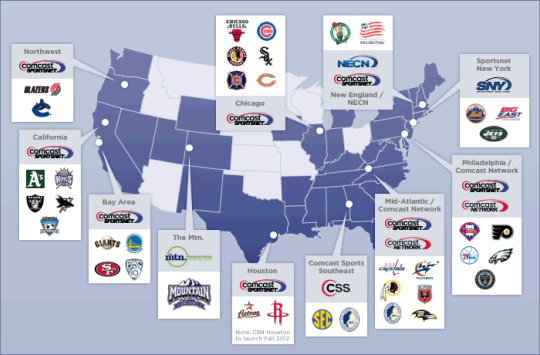
When the film industry thought no one would go to the movies anymore in the 1950s, they were wrong. In the same vein, there are some charms of cable TV that streaming services cannot replace.
The history of cable television is rich and diverse. While it may be facing a decline right now, it certainly hasn’t lost its relevance in the 21st century. Cable TV forever changed how we consume media, information, and communications.
Conclusion
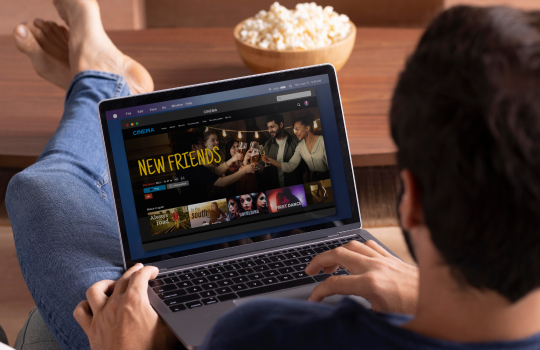
How many people have cable today? In 2020, 82.9 million households had a cable subscription. By comparison, Netflix only has 73.28 million paid subscribers as of early 2022. So, has Netflix overtaken cable? No, not yet. But perhaps streaming services as a whole might threaten cable TV. For instance, as the most extensive streaming service, Amazon Prime has over 200 million subscribers.
While the majority of entertainment content we consume is through streaming platforms, it doesn’t overshadow cable. Indeed, we wouldn’t have Netflix and Prime without cable. Rather than thinking of the death of cable at the hands of streaming, it instead shows the transition of cable over time.
